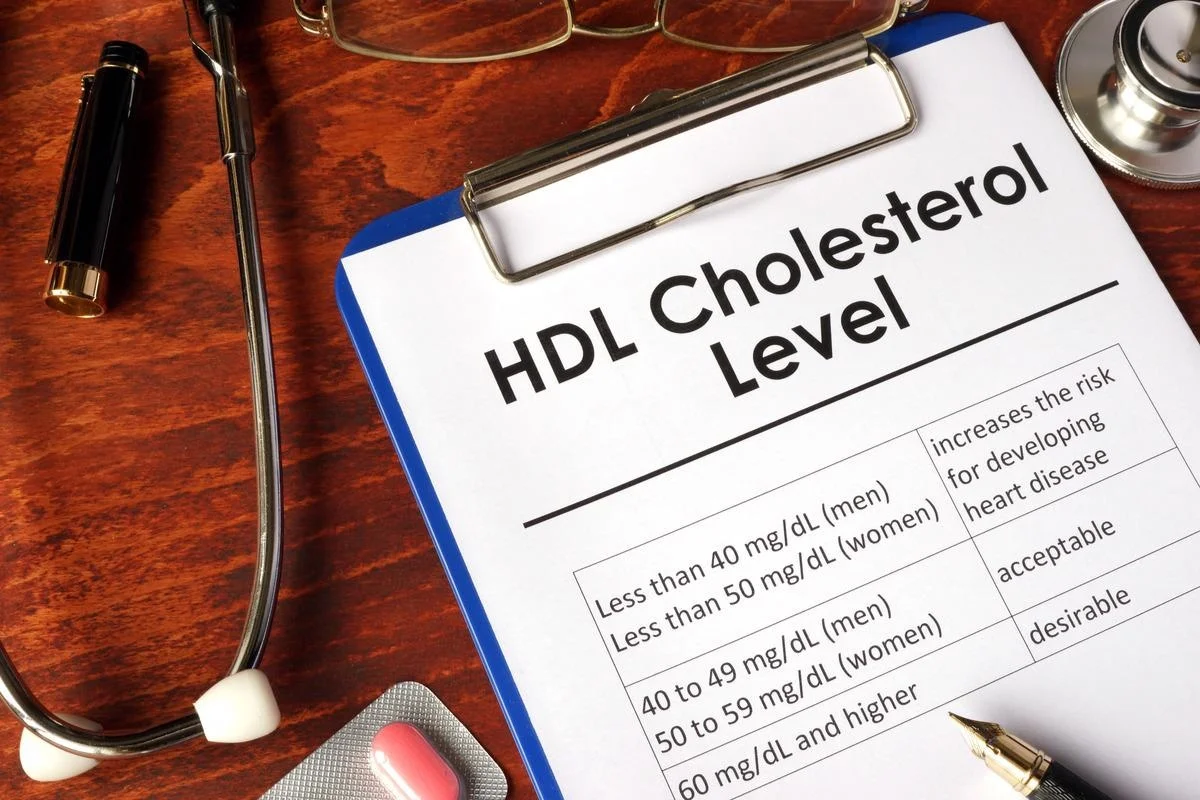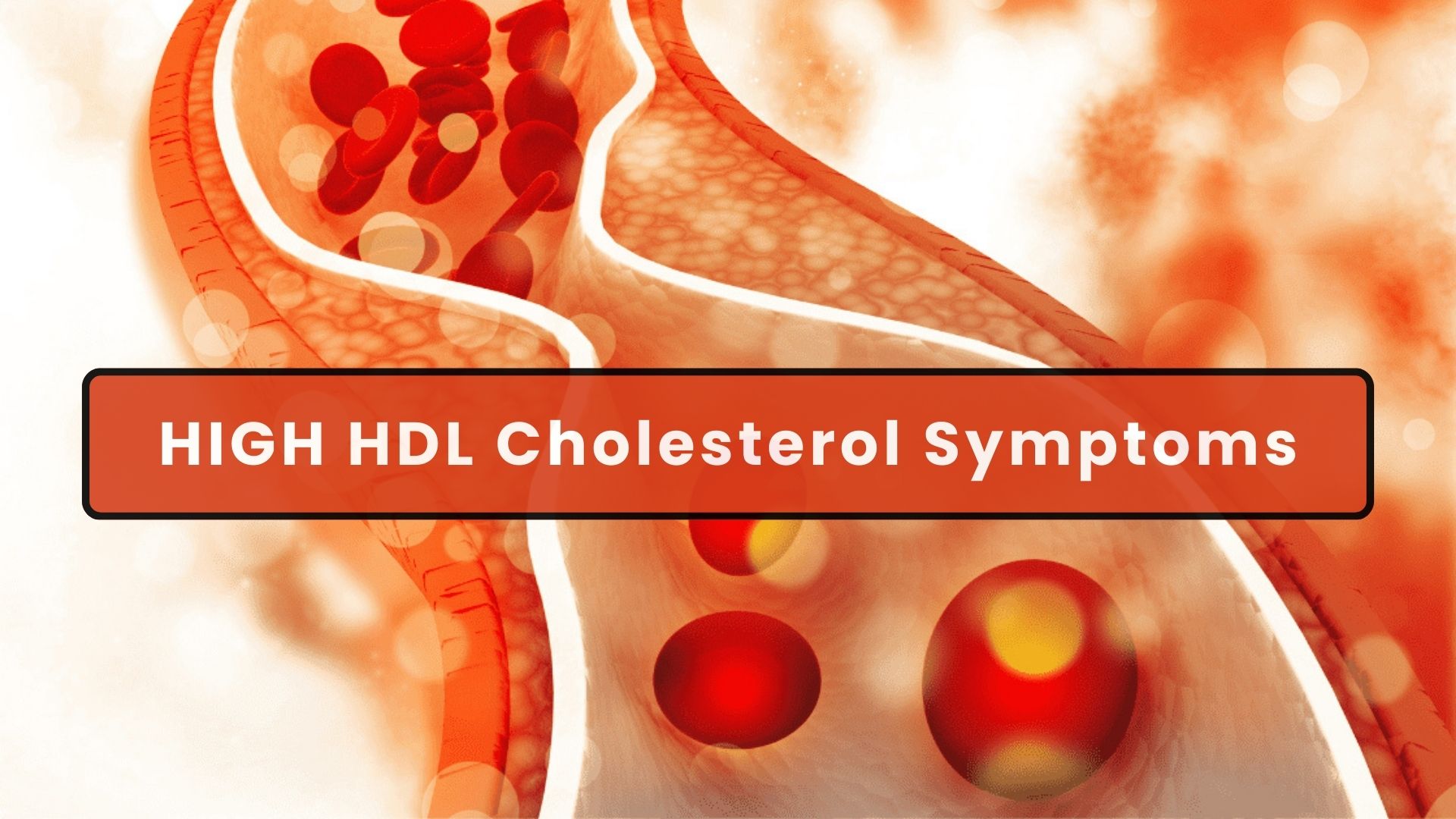High cholesterol is a condition in which blood cholesterol levels are elevated enough to cause health problems such as heart disease or stroke. Cholesterol is a fat-like substance found in the human body’s cells, which we need to function normally.
While high HDL cholesterol is often considered beneficial, excessively high levels may indicate underlying health risks. HDL cholesterol, often called “good cholesterol,” helps remove excess LDL (bad) cholesterol from the bloodstream. However, research suggests that abnormally high HDL cholesterol symptoms could be linked to heart disease, inflammation, and metabolic issues.
According to studies, more than 50 percent of individuals struggle with high cholesterol levels. The good news is that early detection and lifestyle changes can help manage cholesterol levels and reduce associated risks.
Understanding the symptoms, causes, types, and diagnoses of high HDL levels is key to preventing complications like high blood pressure, peripheral vascular disease (PVD), heart attacks, and diabetes. Let’s dive in!
High HDL Cholesterol Explained
Cholesterol is a waxy, fat-like substance found in the human body cells that produce hormones, vitamin D, and substances that help digest food. It’s produced naturally by the liver and obtained from certain foods. While cholesterol is essential for hormone production and cell membrane function, an imbalance can pose serious health risks.
Recognizing High HDL Cholesterol Symptoms
While high cholesterol is often asymptomatic, extremely high levels of HDL cholesterol can signal potential health risks. Some symptoms and associated conditions include:
- Dizziness & Fatigue – An imbalance in cholesterol levels may cause circulatory issues, leading to low energy and dizziness.
- Chest Pain (Angina) – In some cases, excessively high HDL cholesterol can indicate arterial blockages, leading to chest discomfort or pain.
- High Blood Pressure – Poor cholesterol regulation can contribute to hypertension, increasing cardiovascular risks.
- Xanthomas (Fat Deposits) – Yellowish cholesterol-rich deposits under the skin may appear in people with cholesterol imbalances.
- Vision Problems – Cholesterol deposits may form around the cornea (arcus senilis), affecting vision.
- Increased Risk of Heart Disease – Extremely high HDL levels (above 100 mg/dL) may lead to inflammatory responses, potentially increasing the risk of heart disease.
Why Can High HDL Cholesterol Be Harmful?
Although HDL cholesterol is known as the “good cholesterol”, excessively high levels can become problematic due to:
- Impaired Cholesterol Clearance – Very high HDL levels might lead to cholesterol recycling issues, causing artery plaque buildup.
- Inflammation & Oxidative Stress – Studies suggest that abnormally high HDL cholesterol may promote inflammation in some individuals.
- Liver Dysfunction – High HDL cholesterol levels can sometimes indicate liver disease or metabolic disorders.
Types of Cholesterol
As discussed above, cholesterol is vital in helping build cells and normal body functioning. However, not all types of cholesterol are the same. We can categorize cholesterol into 3 different types, listed below:
Low-Density Lipoprotein (Bad Cholesterol)
Low-density lipoprotein (LDL) cholesterol is often labeled as “bad” because high levels of LDL can lead to plaque buildup in the arteries, increasing the risk of heart disease and stroke. Factors like a poor diet, lack of exercise, and genetics can contribute to high LDL levels.
High-density Lipoprotein (Good Cholesterol)
High-density lipoprotein (HDL) cholesterol is considered “good” because it helps remove excess LDL from the bloodstream, transporting it to the liver for disposal. Higher HDL cholesterol levels are generally associated with a lower risk of heart disease.
Very Low-Density Lipoprotein (Hidden Risk)
Very low-density lipoprotein (VLDL) is another type of bad cholesterol that primarily carries triglycerides, a type of fat. Like LDL, too much VLDL can contribute to artery blockages and increased cardiovascular risks.
Triglycerides (Fat Factor)
Triglycerides are not a type of cholesterol but are closely linked to it. High triglyceride levels, combined with high LDL or low HDL, can significantly raise the risk of heart disease.
Symptoms of Low Cholesterol
While high cholesterol is a concern, extremely low cholesterol levels can also affect health. Symptoms of low cholesterol may include:
- Depression & Anxiety
- Memory Issues
- Hormonal Imbalances
- Digestive Issues
Optimal Cholesterol Level Charts

Knowing the different types of cholesterol levels is essential for maintaining good heart health, but what number should you aim for? Let’s break down and understand the ideal cholesterol levels.
| Types of Cholesterol | Optimal Levels |
| Total Cholesterol | Below 200 mg/dL |
| LDL (Bad) Cholesterol | Below 100 mg/dL |
| HDL (Good) Cholesterol | 40 mg/dL or higher |
| Triglycerides | Below 150 mg/dL |
High HDL Cholesterol Symptoms in Women
High HDL Cholesterol Symptoms in women may differ due to hormonal changes, especially after menopause. Some specific signs include:
- Neck, Jaw, or Back Pain
- Extreme Fatigue
- Dizziness & Headaches
- Swelling in Lower Extremities
- Hot Flashes & Night Sweats
Causes of High HDL Cholesterol
High HDL cholesterol symptoms can be caused by a variety of factors. Let’s explore these reasons to take proactive steps to maintain heart health.
Heredity
Genetic conditions like familial hypercholesterolemia can lead to high LDL cholesterol and high non-HDL cholesterol, increasing the risk of early heart disease.
Age
As people age, the body processes cholesterol less efficiently, leading to increased levels of LDL cholesterol and high HDL cholesterol levels.
Gender
Women often have higher HDL cholesterol levels than men due to estrogen, but menopause can lead to a spike in LDL cholesterol and an increase in cardiovascular risks.
Diet
Diets high in saturated fats, trans fats, and processed foods contribute to high LDL cholesterol, high non-HDL cholesterol, and high blood pressure.
Tobacco Use
Smoking lowers HDL cholesterol levels and damages blood vessels, accelerating plaque buildup and increasing the risk of PVD, heart attack, and stroke.
Level of Physical Activity
A sedentary lifestyle contributes to higher LDL cholesterol levels and lower HDL cholesterol, increasing the risk of cardiovascular diseases.
Obesity
Being overweight is associated with increased LDL cholesterol and high non-HDL cholesterol, raising the risk of heart disease and diabetes.
Diabetes
Diabetes leads to increased HDL cholesterol and decreased LDL cholesterol, making cholesterol management crucial for diabetic patients.
Diagnosis of High HDL Cholesterol
If left unchecked, high and low cholesterol can lead to serious health risks, including heart disease. That’s why routine screening is essential, especially for individuals with risk factors like poor diet, obesity, smoking, or a family history of cholesterol-related conditions. High cholesterol is diagnosed through a lipid panel (cholesterol test), a simple blood test that measures fat levels in the blood.
- Lipid Panel Test – A blood test that measures total cholesterol, LDL (bad cholesterol), HDL (good cholesterol), and triglycerides.
- Fasting vs. Non-Fasting Test – Some tests require fasting for 9-12 hours for accurate results.
- Physical Examination & Medical History – Doctors assess risk factors like family history, diet, lifestyle, and existing health conditions.
- Additional Tests – In some cases, advanced lipid testing, coronary calcium scans, or CRP tests may be recommended.
Important Tips to Know about Cholesterol
As discussed throughout this piece, cholesterol plays an essential role in the optimal functioning of the human body. Making smart lifestyle choices, staying informed, and getting your cholesterol levels tested regularly will keep your cholesterol levels in check. Here are some essential tips to help you manage and maintain healthy cholesterol levels.
- Know your non-HDL cholesterol levels
- Test your children’s cholesterol levels
- Increase your cholesterol checkups after 40
- Remember that there is no universal ideal cholesterol level.
- Medications may help if lifestyle changes don’t work
Conclusion
While HDL cholesterol is essential for heart health, abnormally high levels can signal underlying risks. High HDL cholesterol symptoms may include fatigue, dizziness, chest pain, and increased cardiovascular disease risk.
By staying informed, making lifestyle changes, and scheduling routine cholesterol screenings, you can effectively manage cholesterol levels and reduce the risk of heart-related complications.
FAQs
Q. What causes high HDL cholesterol?
A. High HDL cholesterol levels can be caused by genetic reasons, less physical activity, tobacco use, lifestyle choices, and certain medications.
Q. What is the ideal HDL cholesterol level?
A. The ideal HDL cholesterol level is between 40 to 100 mg/dL.
Q. How to lower high HDL cholesterol?
A. To lower high HDL cholesterol and maintain balanced cholesterol levels:
- Reduce intake of processed foods and sugar.
- Exercise at least 30 minutes a day.
- Maintain a healthy weight.
- Avoid smoking and limit alcohol consumption.
- Intake of healthy foods, including olive oil, nuts, and fatty fish.
Q. What Foods are High in HDL Cholesterol?
A. Foods that are high in HDL cholesterol include:
- Fatty fish (salmon, mackerel, sardines)
- Avocados
- Olive oil
- Nuts
- Flaxseeds and chia seeds

